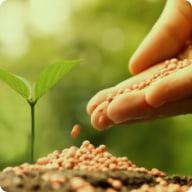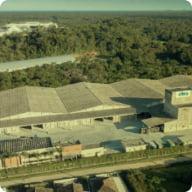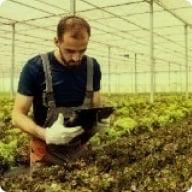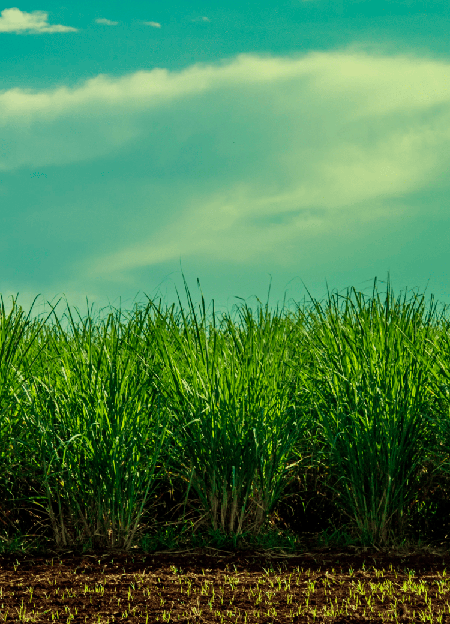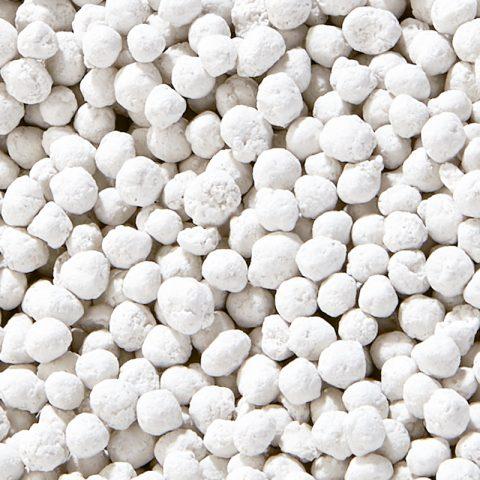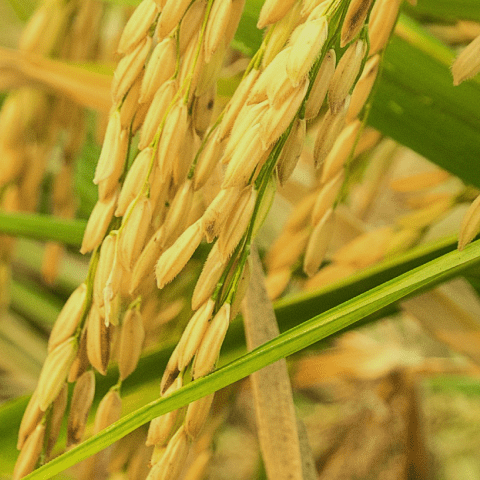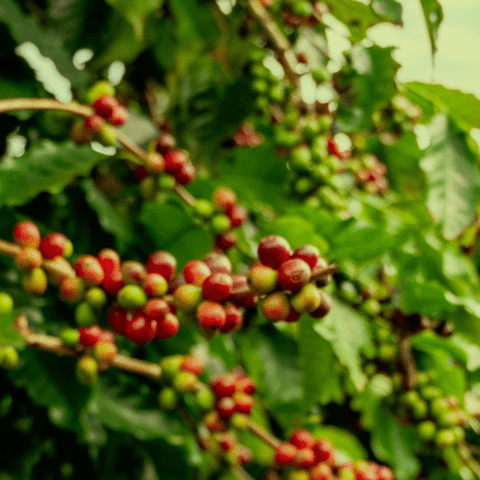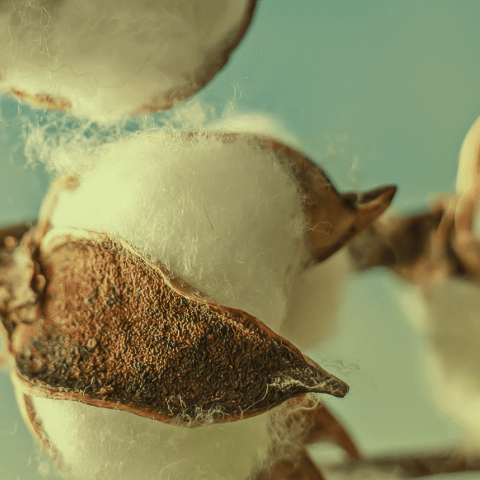SUGARCANE IN THE NATIONAL MARKET
It is estimated that sugarcane is grown an area of more than 10.2 million hectares in Brazil.
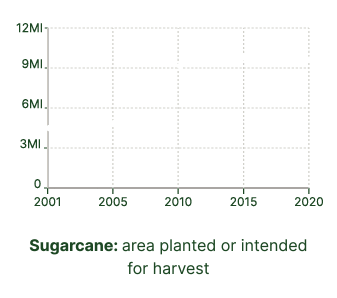

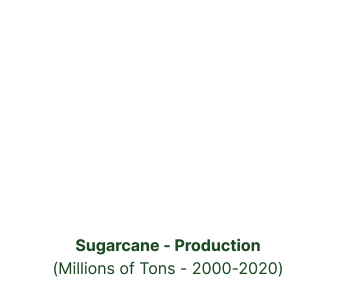
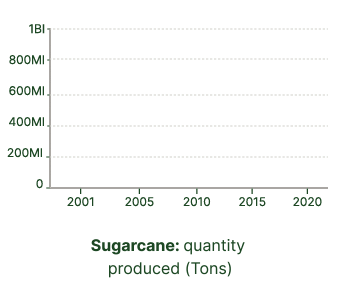
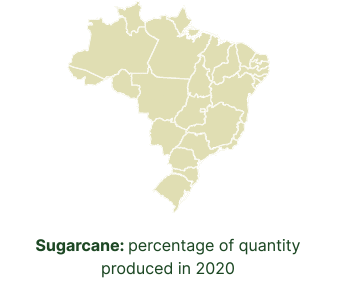
What do you need to know
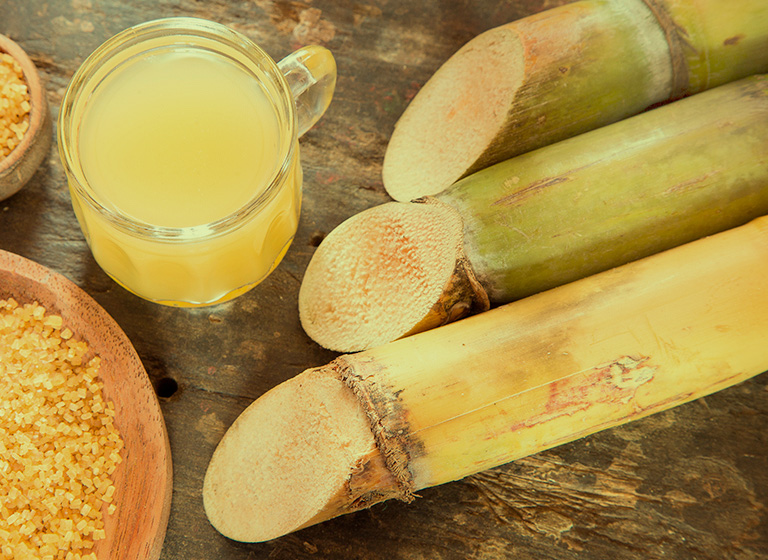
A high productivity management must contain micronutrients that provide the sugarcane with balanced nutrition to ensure a stable development.
The crop yield is one of the main reasons for the growth of production in the national territory. This culture is the basis for two main products used by humans – ethanol and sugar. For this reason, fertilization from planting/cutting to harvesting has to be done judiciously, providing the essentials for the plant’s development.
We know that fertilization with NPK fertilizer is essential for the start of the sugarcane crop, and nitrogen (N) is essential for the development in the primary phase of the plant. Nitrocap is a product that guarantees the protection of nitrogen (N) and the absorption of the nutrient, allowing the plant to enjoy this nutrient for a longer period of time, without it suffering from the volatilization process. In addition to the fact that there are several formulations with Nitrocap for every phase of the crop, be it in planting, covering or fertilizing ratoon.
A high productivity management must contain micronutrients, making the nutrition of the sugarcane field balanced, for this CibraMix brings with it, in addition to the NPK formulation, micronutrients in the phosphorus granule, ensuring greater uniformity in the distribution of nutrients at the time of fertilizer application.
Principais Deficiências
Main Deficiencies
Sugarcane’s Nitrogen Deficiency (N)
Structural component of various molecules and enzymes. It is part of free amino acids which gave rise to amino acids and proteins. It is a precursor of the hormones tryptophan and methionine, in addition to chlorophyll and cytochrome.
It is still present in nitrogenous bases, nucleosides and acting in the polymerization of DNA and RNA.
It is also present in the coenzymes NAD and NADP, essential for plant growth and development. Deficiency – Withering of older leaves. Leaf blades are uniformly pale green to yellow, culms are shorter and thinner. Delayed vegetative development, the tips and margins of older leaves dry out prematurely.
Sugarcane’s Phosphorus Deficiency (P)
It is responsible for supplying energy by the so-called ATPs, which release energy when their bonds are broken, making them available for metabolic processes.
In addition, it acts on enzymatic control and is important for young plants, being an essential phytate for germination (phospholipids-cell membranes and nucleic acids).
Deficiency – It appears on old leaves with reddish tones at the tips and margins of the leaves and presents a decrease in its size. The culms become smaller and thin and there is a decrease in the tillering of the plant.
Sugarcane’s Potassium Deficiency (K)
It participates in enzymatic activation, with an average of 50 enzymes that demand K for their normal activity.
Another fundamental function is osmoregulation, being responsible for the control of stomatal opening and closing.
Deficiency – It starts in the old leaves, which turn orange, and can become completely brown. This chlorosis progresses to necrosis, leaving the leaves with a burnt appearance. There is also thinning of the culms and the main vein shows reddish stains.
Sugarcane’s Calcium Deficiency (Ca)
Constituent of the middle lamella, having a role in maintaining the structure and functioning of cell membranes.
It is still important in the process of cell elongation and division. It also acts on root growth. Calcium (Ca) is required for pollen grain germination and pollen tube growth, which are essential for fertilization.
Deficiency – It starts in new leaves, which become whitish and curl downwards, forming a hook. Older leaves may look rusty. In places with more severe deficiency, there is a thinning and softening of the culms.
Sugarcane’s Magnesium Deficiency (Mg)
It makes up chlorophyll, which is essential for plant life. In addition, it also has another role which is to be an enzyme cofactor.
Magnesium (Mg) participates in a number of vital plant processes that require and provide energy, such as photosynthesis, respiration, synthesis of molecules, carbohydrates, lipids, proteins and ionic absorption.
Deficiency – Appears on old leaves in the form of punctures, starting at the tips and along the margins. Red, rust-like necrotic lesions appear. The inner part of the stem bark is brownish in color.
Sugarcane’s Sulfur Deficiency (S)
Participating in two important amino acids (cysteine and methionine) present in all proteins, sulfur (S) fulfills the function of giving stability to the structure of proteins.
Deficiency – In young leaves, which present generalized chlorosis, reduced leaf size and very thin culms. It causes numerous disturbances in the plant, as a result of the decrease in protein and sugar synthesis.
Sugarcane’s Iron Deficiency (Fe)
Component of a large number of enzymes essential to plant development. It is also involved in chlorophyll biosynthesis and the amount of chloroplasts.
It is also required for N metabolism, both for biological N2 fixation and for nitrate reduction.
Deficiency – The affected leaves present interveinal chlorosis that spreads along the entire length of the leaf blade and reaches the central vein. As the plant grows, several stages of yellowing appear.
Sugarcane’s Manganese Deficiency (Mn)
It acts in the photochemical breakdown of water and oxygen routing, essential factors for the photosynthetic process. It accelerates germination and increases the plants’ resistance to drought, benefiting the root system.
Deficiency – Plants have very distinct longitudinal bands of green and yellow tissue from the middle to the tips of the leaves; in severe cases, the leaf completely loses its green color, becoming uniformly chlorotic; in the whitish regions, necrotic spots may appear, which coalesce to produce continuous streaks of dead tissue. Appearance of yellow streaks along the veins and thinner leaves.
Sugarcane’s Zinc Deficiency (Zn)
It is an important enzyme cofactor and structural component in proteins. The biochemical processes to which this element acts are protein synthesis, hormone regulation and energy production.
Deficiency – In young plants, they germinate with a small elongation of the palm heart, with a tendency for the leaves to all come out of the leaf apex at the same height, forming the “fan” symptom.
In cases of more severe deficiency, deficient plants are noticeably smaller than those without deficiency, and older leaves have red spots on the underside. In plants older than six months there is a slight shortening of the internodes, chlorotic streaks on the leaf blade, but the midrib and the margins remain green. A reduction in the growth of the internodes and a stop in the growth of the top can be observed.
Sugarcane’s Copper Deficiency (Cu)
The main function of copper in plant metabolism is as an activator or component of enzymes that participate in oxidation-reduction reactions.
Plant resistance to fungal diseases is also related to an adequate supply of copper. It increases drought resistance and is important in the formation of knots.
Deficiency – Green spots appear on the leaves, these can become discolored, become thin and can be curled when the deficiency is severe. The culms and meristems lose their turgidity (‘fallen top’ disease) and acquire an appearance similar to a crushed clump. Reduction of tillering and drop in productivity.
Sugarcane’s Boron Deficiency (B)
Formation of new tissues, is a constituent of the cell wall and the integrity of the plasma membrane.
It participates in cell division, in the metabolism and transport of sugars, in the germination of the pollen grain and in the growth of the pollen tube.
Deficiency – Causes deformation of new leaves, forming a wrinkle. The top leaves are twisted, forming a “knot” between the leaves, which are tied together. The apical meristem can dry up and die.
Fertilizantes Indicados
Indicated Fertilizers
Veja também
BaseFort, Cibrativ, FosCibra, KCl
Potassium Chloride, MAP
Monoammonium Phosphate, SSP
Super Simple Phosphate, TSP
Triple Superphosphate ...
See more
BaseFort, Cibrativ, FosCibra, KCl
Potassium Chloride, MAP
Monoammonium Phosphate, SSP
Super Simple Phosphate, TSP
Triple Superphosphate ...
Pragas da cana-de-açúcar
Pragas das raízes do algodoeiro,
pragas das folhas e hastes
pragas das estruturas frutíferas.
- Broca da cana
Diatraea saccharalis - Bicudo da cana
Sphenophorus levis - Cigarrinha das raízes
Mahanarva fimbriolata - Broca dos rizomas
Migdolus fryanus
- Broca gigante
Telchin licus - Cupins
Heterotermes tenuis, Neocapritermes opacus, Embiratermes sp, Procornitermes triacifer - Pão-de-galinha
Scarabaeidae - Larvas arame
lateridae
- Larvas de Naupactus sp
Curculionidae - Pérola-da-terra
Eurizococcus brasiliensis - Larva de Broca Peluda
Hyponeuma taltula - Lagarta elasmo
Elasmopalpus lignosellus - Formigas cortadeiras
Atta laevigata
Doenças da cana-de-açúcar
Doenças foliares:
- Ramulose
Colletotrichum gossypii var. Cephalosporioides - Mancha angular
Xanthomonas axonopodis pv. Malvacearum - Mancha alvo ou mancha de corinéspora
Corynespora cassiicola - Mancha branca ou mancha de ramulária
Ramularia aréola
- Mancha-de-mirotécio
Myrothecium roridum - Manchas de alternária e estefilium
Alternaria sp e Stemphylium solani - Mofo branco
Sclerotinia sclerotiorum - Murcha de fusarium
Fusarium oxysporum f. sp. Vasinfectum
- Doença Azul
Doença de natureza virótica cujo agente causal ainda não foi descrito. A doença tem como vetor o pulgão Aphis gossypii. - Nematoides
Especialmente os do gênero Meloidogyne, Rotylenchus e Pratylenchus.

